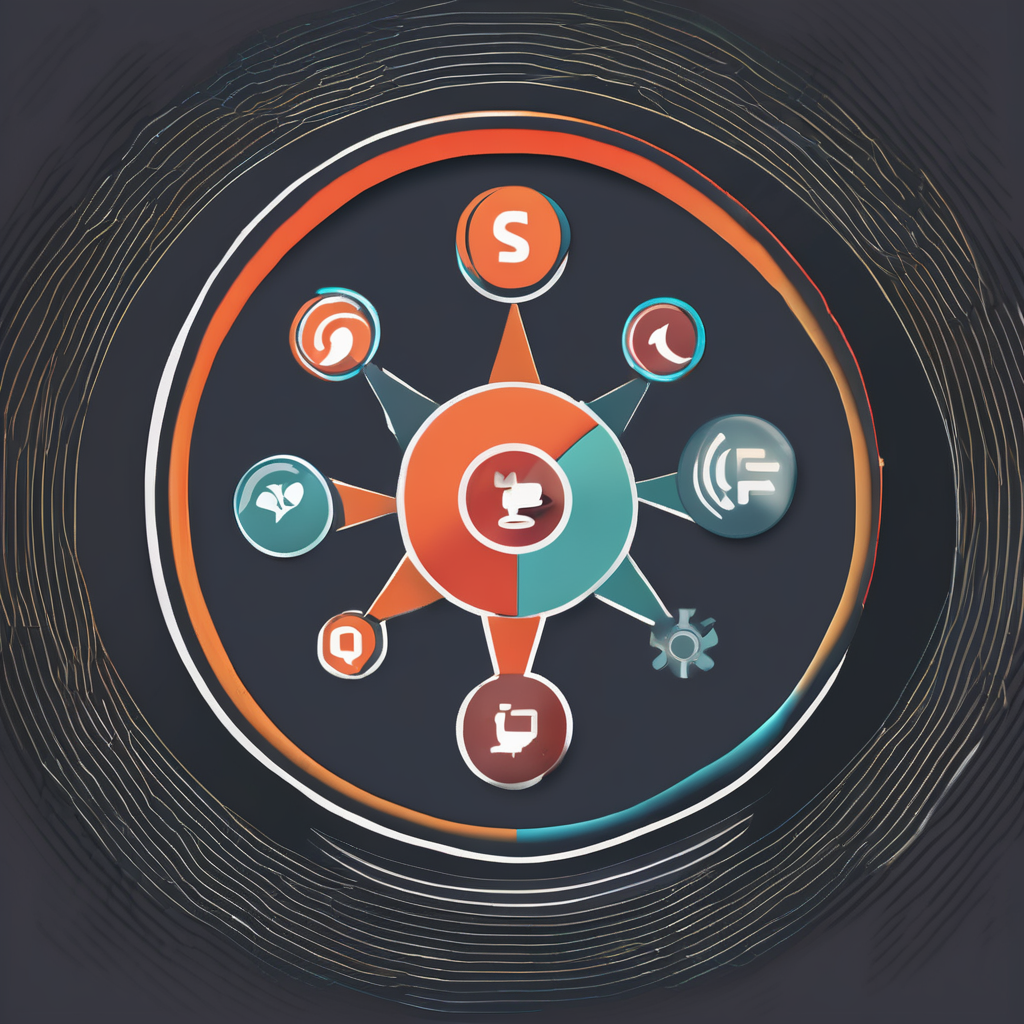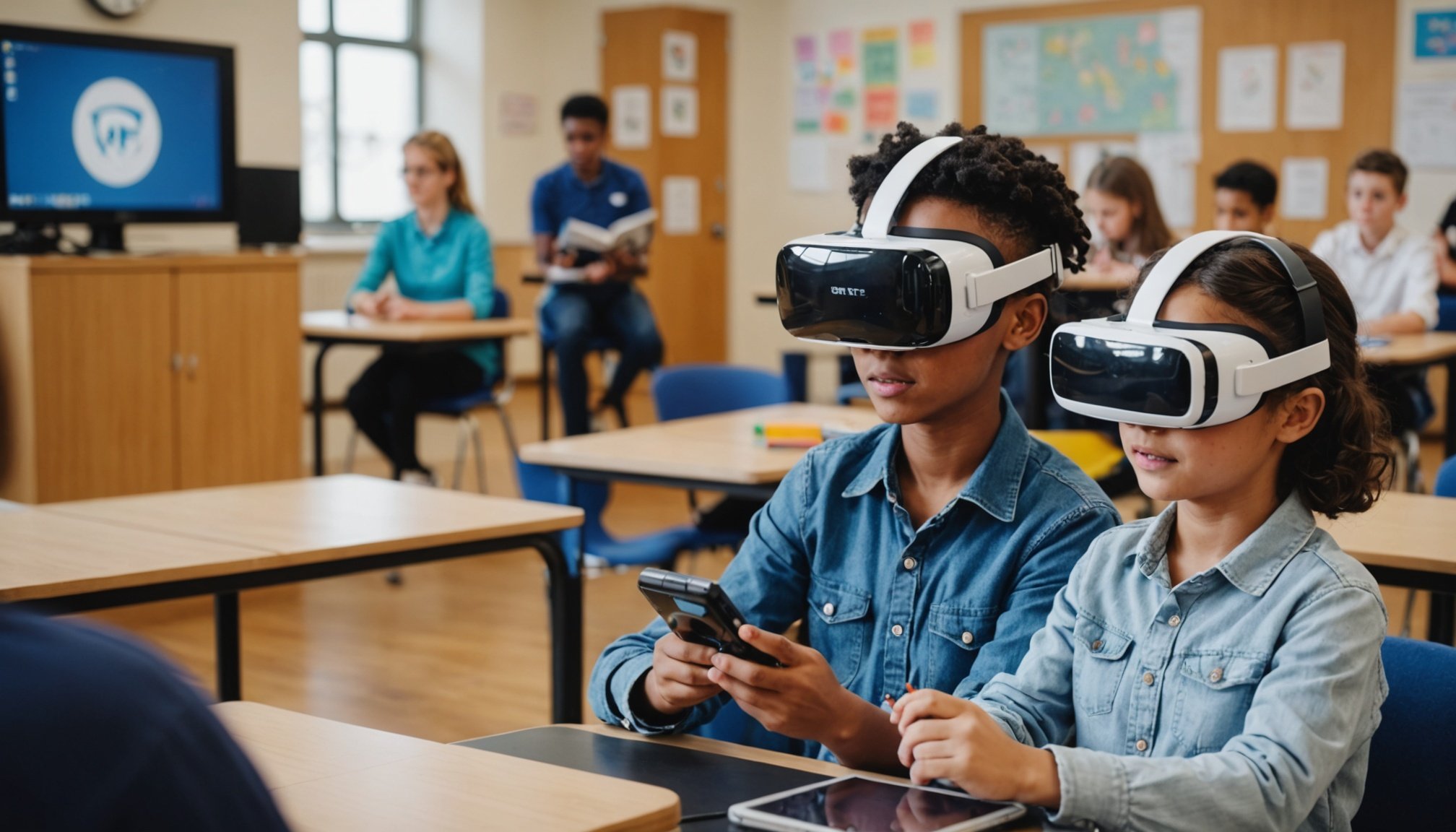Overview of AR/VR Innovations in Education
Augmented Reality (AR) and Virtual Reality (VR) are pioneering educational technology trends transforming learning environments. Their integration into education allows students to explore immersive experiences that traditional methods cannot provide.
AR in education superimposes digital information, like images or data, over the real world to enhance learning. For instance, AR applications enable students to visualize complex subjects such as human anatomy by interacting with detailed, 3D models right in the classroom. This hands-on approach helps in understanding concepts better.
Additional reading : Revolutionizing uk logistics: harnessing blockchain for superior shipment tracking solutions
VR, on the other hand, offers a completely virtual environment where learners can dive into experiences such as historical simulations or virtual laboratory experiments. By using headsets, students are transported into a different world, broadening their learning landscape beyond physical boundaries.
Recent technological advancements in AR/VR have seen more portable and affordable devices, making their adoption feasible for many educational institutions. These innovations are crucial for enhancing student engagement by making education more interactive and motivating.
Topic to read : Maximizing workplace safety with custom equipment and signage
To fully harness the potential of AR/VR in education, it’s essential to integrate them thoughtfully into the curriculum. Doing so not only aids knowledge retention but also fosters a more engaging and stimulating learning experience.
Case Studies of AR/VR Implementation
Augmented Reality (AR) and Virtual Reality (VR) have been revolutionising educational practices in the UK, with several notable schools leading the way. These success stories in education not only inspire but also set benchmarks for integrating new technologies.
One such example includes a prestigious institution in London, where AR/VR tools play a vital role in their curriculum. Utilising platforms like Google Expeditions, students can explore ancient civilisations virtually, enhancing their history lessons. This immersive experience not only captivates students but has also led to a marked improvement in their engagement and retention of information.
Both students and teachers have provided glowing testimonials on these AR/VR initiatives. Teachers have noted increased enthusiasm in classrooms, as well as learners actively participating in discussions. For students, these tools make abstract concepts more tangible and relatable.
A variety of AR/VR tools are employed, such as Merge Cubes for science classes, which allow students to interact with 3D models of molecules or astronomical bodies. These innovations foster a deeper understanding of complex subjects. It becomes evident that when AR/VR technologies are thoughtfully integrated into the curriculum, they do not merely supplement traditional learning—they transform it.
Benefits of AR/VR in Learning Environments
Augmented Reality (AR) and Virtual Reality (VR) are transforming educational spaces, introducing immersive learning that captivates students significantly. By placing learners in simulated environments, AR/VR can enhance interactive learning experiences. Students interact with virtual models and scenarios, greatly boosting student engagement. This active participation helps commit lessons to memory, improving retention of information.
Moreover, AR/VR fosters crucial skills like critical thinking through hands-on virtual problem-solving. Students analyze different situations and develop solutions, improving their understanding of complex concepts. This kind of active learning, supported by technology, resonates more with students, leading to better academic outcomes.
Beyond captivating learners, AR/VR also offers accessibility benefits. It supports diverse learning needs, allowing tailored educational experiences for individual preferences and styles. Whether visual, auditory, or kinesthetic learners, students can engage in ways that suit their strengths. This flexibility ensures that educational content reaches all students effectively, breaking traditional barriers to learning.
Incorporating AR/VR into traditional curriculum enhances teaching methods, creating engaging, comprehensive learning experiences. By leveraging the power of AR/VR, educators can provide students with dynamic and immersive learning opportunities that are both inclusive and effective.
Challenges in Integrating AR/VR
Integrating AR/VR into educational environments comes with its own set of challenges. Financial constraints are among the primary concerns, as many schools may have limited budgets that need to be reallocated to fund these technologies. Investment in AR/VR technology includes purchasing hardware, acquiring software licenses, and potentially maintaining or upgrading existing infrastructure to support these innovative tools.
Another barrier is the need for technical expertise and extensive training for educators. Teachers must become proficient in using these technologies, which can be a daunting prospect. Without the necessary training, the potential of AR/VR to revolutionize teaching and learning might remain untapped. This training involves not only understanding the new tools but also discovering how best to integrate them into traditional teaching methods.
Furthermore, resistance to change is a common challenge across many educational environments. Institutional cultures can foster an attachment to conventional teaching methods, making it difficult to implement AR/VR initiatives. Staff members, accustomed to traditional educational models, may express concerns over the efficacy and necessity of digital innovations. Overcoming these barriers involves demonstrating the tangible benefits of AR/VR in education and fostering an open-minded attitude toward new methodologies.
Practical Applications for Educators
When considering AR/VR classroom activities, it’s essential to integrate these technologies effectively to enhance teaching strategies. Begin by identifying clear objectives aligned with your curriculum. This clarity ensures that AR/VR is not just an addon but a powerful tool that complements learning outcomes. For example, in history classes, VR can transport students to ancient civilizations, providing an immersive exploration far beyond textbook descriptions.
Guidelines for Implementing AR/VR Activities
To successfully integrate AR/VR, educators should:
- Determine the learning goals that AR/VR can support.
- Select appropriate platforms and applications that meet these goals.
- Ensure all students have access to necessary hardware and software.
Creating AR/VR content tailored to curriculum needs requires creativity and tools that allow customization. Teachers might collaborate with colleagues to share valuable resources and insights. Furthermore, engaging with technology providers and app developers can lead to custom solutions that better fit educational objectives.
Collaboration with Experts
Partnering with technology providers can provide essential support and equipment, ensuring successful integration. By working closely with developers, educators can develop tailored educational experiences that address specific curriculum requirements. Emphasizing collaboration ensures that AR/VR activities remain relevant, practical, and impactful for diverse learning environments.
Policy Implications and Support
A look at the current UK educational policy framework reveals an increasing emphasis on integrating technology within schools. This trend is gaining momentum, driven by a recognition of the potential benefits that tech, such as AR and VR, can bring to learning experiences. The government’s endorsement plays a crucial role in this shift, offering support through funding initiatives and strategic guidance.
Educational institutions are tasked with the responsibility of effectively implementing AR/VR technologies in classrooms. This involves not only investing in the necessary infrastructure but also ensuring that educators are well-equipped to make the most of these tools. The government support for AR/VR becomes instrumental here, providing resources for both technological upgrades and teacher training.
Looking forward, any changes in educational policy will significantly impact the pace and scope of technology adoption in UK schools. With robust support structures in place, schools could see accelerated incorporation of AR/VR into curriculums, fostering an environment primed for innovative teaching and enhanced student engagement. Proactively adapting policies to nurture these developments will be key in ensuring that the educational landscape fully benefits from tech advancements.
Future Trends in AR/VR Technology in Education
As we look toward the future of AR/VR in education, various exciting possibilities arise. Emerging technologies, especially in the form of augmented and virtual reality, are poised to revolutionise the learning landscape. Predictive analyses suggest that AR/VR tools and applications will become increasingly sophisticated and integrated into educational systems. AI integration is one of the most promising areas, offering personalised learning experiences that adapt to the needs of individual students in real-time. By leveraging AI, educational technologies can facilitate more interactive and engaging environments, enhancing the learning experience.
Moreover, ongoing research and development in educational technology continue to fuel the advancement of AR/VR. Researchers are working tirelessly to explore innovative approaches and refine existing ones, making these technologies more accessible and effective across diverse educational contexts. Such developments promise not only to improve educational outcomes but also to prepare students for a future where technological literacy is crucial.
Ultimately, the convergence of AR/VR with emerging technologies holds the potential to transform traditional educational paradigms, fostering an immersive and dynamic learning environment that prepares students for the complexities of the digital age. By embracing these advancements, educators can empower students to actively engage with their studies in unprecedented ways.











